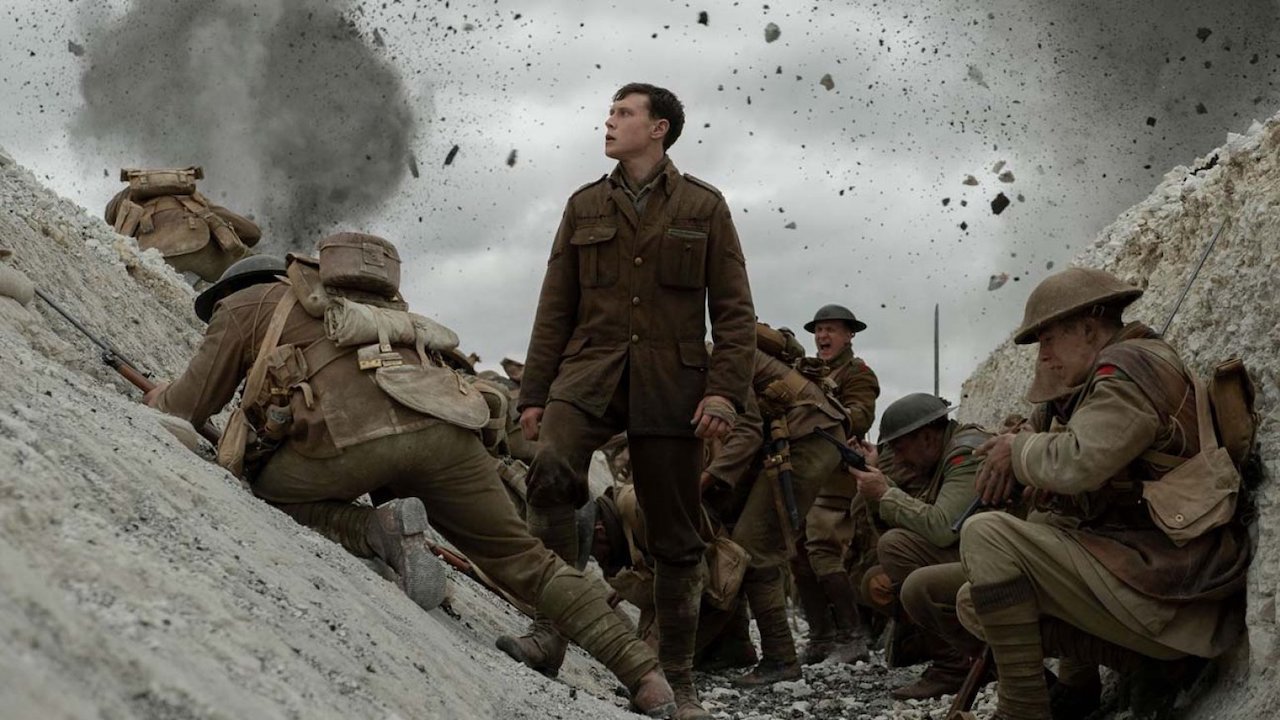Director Sam Mendes Attempts to Depict World War I in a Single Shot.
DIRECTED BY: SAM MENDES/2019
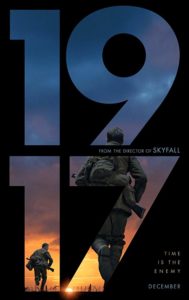
Sam Mendes’ new film 1917 centers on World War I and the task for two British soldiers to break through enemy lines to deliver a message to the British brigade that is deep in enemy territory to stop their advance. Recent intelligence has determined if the message doesn’t get through, and the soldiers continue their attack, then 1,600 British soldiers will lose their lives…including the brother of one of the two messengers. What commences with this command, is a nearly 2 hour race against time for these soldiers to reach their destination and deliver their message.
Much has been made of Mendes’ use of the “one-cut” tracking shot that was utilized in this film, much like the one used in Birdman or (The Unexpected Virtue of Ignorance) in 2014 by director Alejandro G. Inarritu. Many might spend their time trying to find the breaks and edits, much as I did, before giving up and just leaning into the story. Once you surrender to the story, the story quickly carries you along towards these soldier’s endgame.
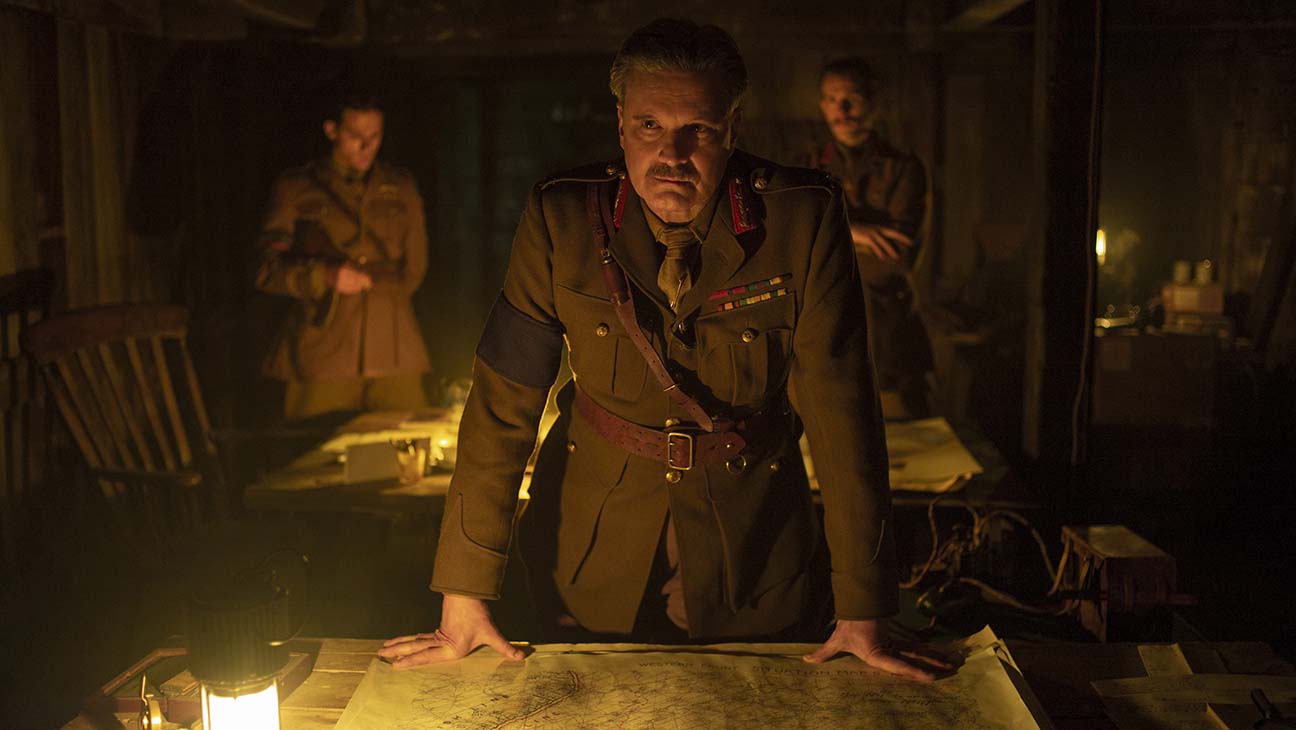
The “one-cut” tracking shot is very effective in keeping the audience’s vantage point restricted to that which can only be seen on screen. This has the effect of introducing some truly adrenaline-inducing surprises and tension to the audience when things crash into the frame unexpectedly, outside of the framing shot at the time. As the tracking shot moves, Mendes is able to also rotate the view away from the main characters at times when it is imperative to show the audience a larger perspective of the scene before going back into tight close-ups of the main character’s journey.
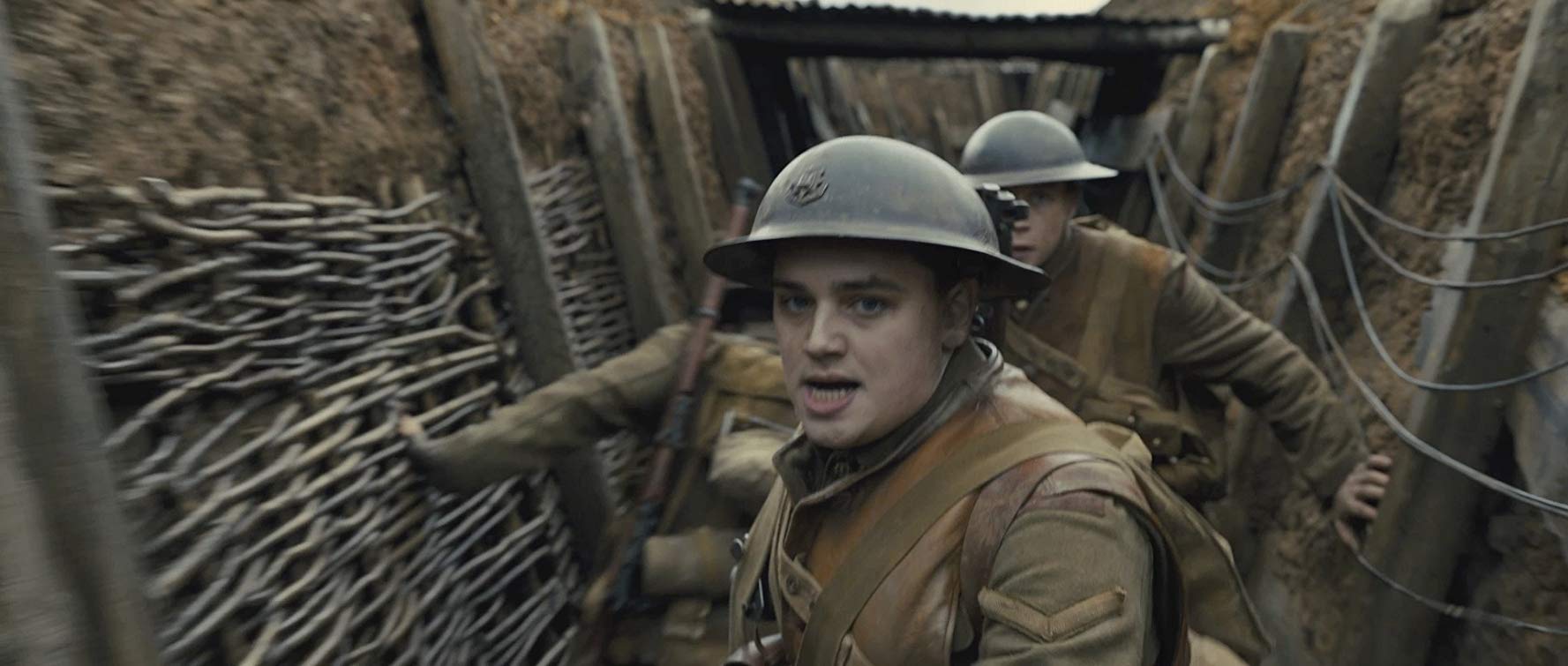
1917 stars Dean-Charles Chapman as Lance Corporal Blake and George MacKay as Lance Corporal Schofield, the soldiers tasked with delivering this vital message. There are brief supporting appearances by Colin Firth (General Erinmore), Mark Strong (Capt. Smith), and by Benedict Cumberbatch (Colonel MacKenzie) that bolster the film’s narrative, acting mostly as bookends to what takes place between their appearances. While Firth, Strong, and Cumberbatch will have their names used in the marketing of this film to draw more audiences, 1917 succeeds by not leaning on the star-power of these names but by largely filling the film with actors who audiences may not all know to tell a story all can better relate to.
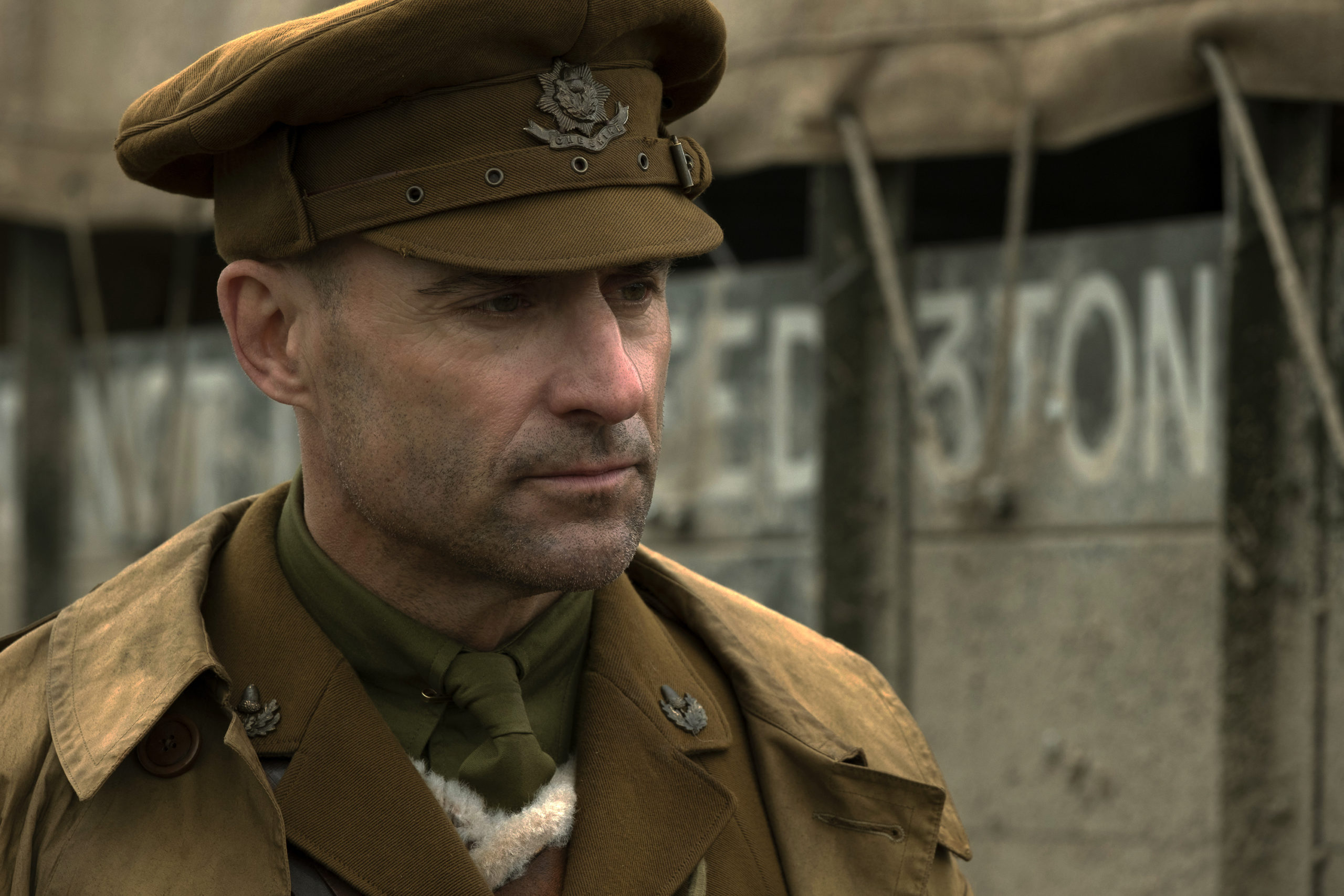
Dean-Charles Chapman and George MacKay both deliver endearing performances that draw the audience into their dangerous assignment. They are able to effectively convey the sense of duty they both have as soldiers, the camaraderie they share in their friendship with each other, as well as the honest fear they both possess as they seek to complete their task. Many war films can be too quick to overemphasize the bravery and courage aspects without contrasting them against the larger context that bravery and courage exist in the face of such fear, not in the absence of it. 1917 demonstrates the true nobility of those who have such fear and seek to do the brave thing, in spite of it.
This is truly a personal film for Mendes (Skyfall, Revolutionary Road) who heard stories of World War I, and the bravery of those who served, from his own grandfather. Mendes helped pen the script, along with Krysty Wilson-Cairns (Penny Dreadful), and delivers a straight-forward narrative that moves a strong, and quick, pace throughout its run time. Other than Peter Jackson’s documentary They Shall Not Grow Old, featuring actual footage of the Great War, 1917 is one of the most visually accurate films about World War I to be delivered in the more modern age. 1917 is to World War I films what Saving Private Ryan was to World War II films. That is to say, it largely tries to capture the authenticity of the war, even when using an invented narrative as the lens in which we see it.
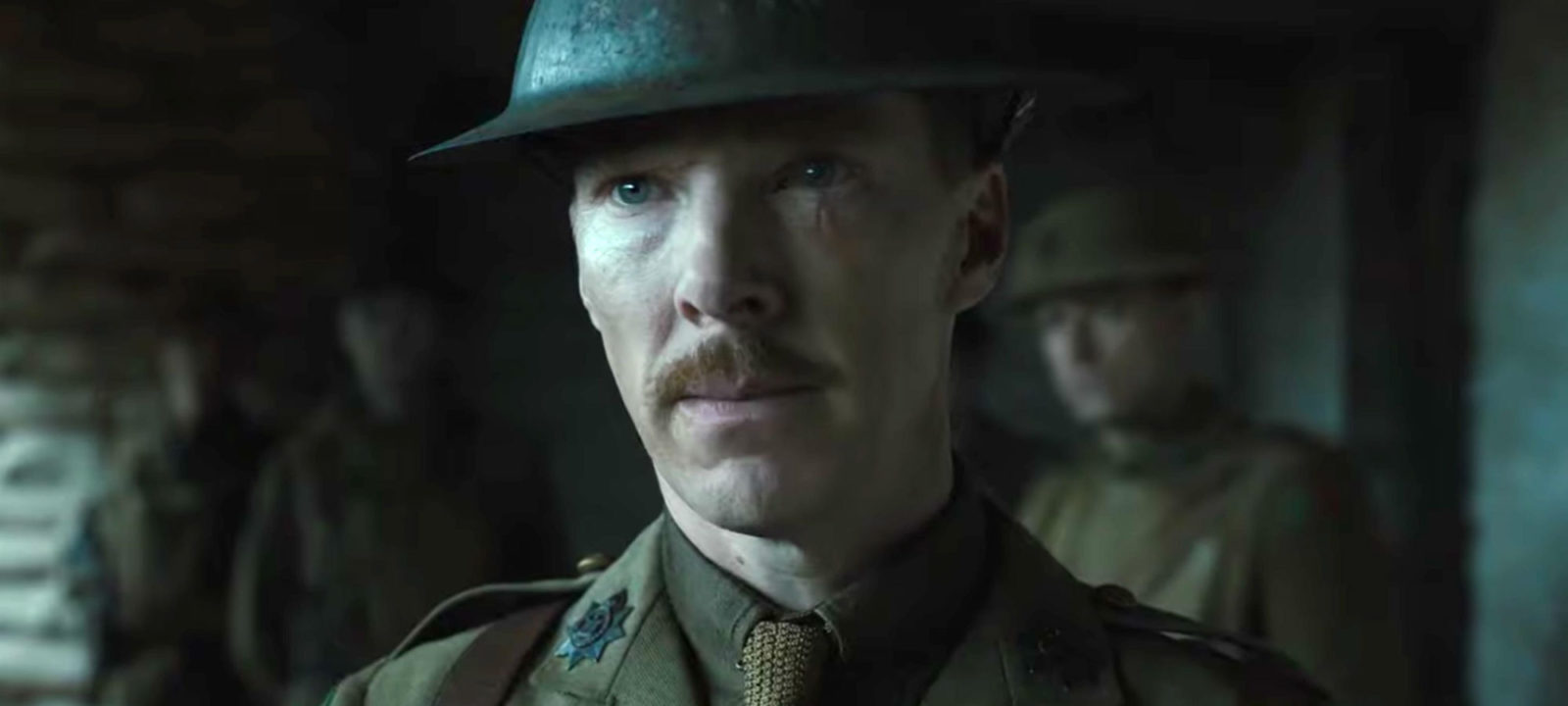
The real praise for this film should fall at the feet of cinematography legend, Roger Deakins. Deakins, who has been behind the camera for films such as Blade Runner 2049, No Country for Old Men, Sicario, True Grit, and many more, delivers a fantastic palette of colors with his camera to bring this story alive. From underground bunkers and trenches, to open countryside and dangerous rivers, his camera brings these contrasting landscapes all together in a way that perfectly captures the story being told.
1917 might not be my ultimate choice to win the Best Picture Oscar, but should it be nominated and ultimately win, it wouldn’t be a film to question such a victory. It has truly earned its spot at the nomination table, and I believe it will connect with audiences as well. 1917 is a passion project for director Sam Mendes that was obviously made with a lot of love and that is sure to feel a lot of love in return by the audiences who see it.
